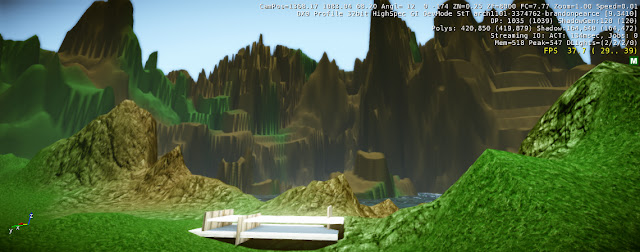Alvar Aalto
From research on both Alvar Aalto himself and his architectural pieces od design it can be seen that Aalto depends on geometrical shape properties for structure. This gives his architecure a 'blocky' appearance with rough jagged edges and discontinuating surface planes. It can be seen that light and light distribution in Aalto's designs depend on structure since there is not diffusion through design materials; therefore the path of light depending soley on the openings of planes and reflection within. Aalto creates designs of enclosed solid boundaries with distinct separation between his creation and the surrounding environment. Through various shapes he mimics nature and creates a sense of monumentality within his architecture with a slowly building approach to a climax within the design.
Alvar Aalto Monuments
Emulation of the exterior by controlled light.
Mimicing Natures forms in the buildings assembly
as a way to integrate with nature.
Vertical framing and grand steps creates a climatic method of approach.
Google Sketchup Model
 The monument corresponding to Alvar Aalto's architecture which i decided to model in sketchup was the concept of 'Mimicing Natures forms in the buildings assembly as a way to integrate with nature.' I chose this concept to model as i believed it carried the most potential within a crysis environment and was an interesting and abstract idea. In sketchup i played with planes and shapes moving things off centre and using varying thicknesses to pull off a mimic of a tree. As with Aalto's architecture i painted on unnantural textures to ensure further separation between the monument and its surroundings.
The monument corresponding to Alvar Aalto's architecture which i decided to model in sketchup was the concept of 'Mimicing Natures forms in the buildings assembly as a way to integrate with nature.' I chose this concept to model as i believed it carried the most potential within a crysis environment and was an interesting and abstract idea. In sketchup i played with planes and shapes moving things off centre and using varying thicknesses to pull off a mimic of a tree. As with Aalto's architecture i painted on unnantural textures to ensure further separation between the monument and its surroundings.Aalto monument within Crysis Environment
Corresponding with the research regarding Aalto's architecture i placed his monument in a climatic position which heightened its sense of importance; in a location where it could be seen throughout the whole environment.
Kengo Kuma
Kengo Kuma's architecture varies quite significantly from Alvar Aalto's as he does not rely on reflection and refraction but chooses to incorporate diffusion into his architecture through chosen materials. Light is not only filitered through openings in the structure but enters through the entities of the structure itself therefore resisting boundaries opposing entry of light. Kuma insists on creating his architecture so it is one with the environment it sits upon; often using natural water, air flow and materials throughout his designs. His architecture remains low key and light therefore containing a natural flow and little impact within its surroundings.
Horizontality and low scale of the building
complements the discreteness and invisibility of
the architecture.
Placement of planes as a filter of light.
Dispersal and fragmentation resulting in
the building's envelopment by the landscape.
Google Sketchup Model
.jpg) When modelling 'Placement of planes as a filter of light.' within google sketchup i decided that this monument would be more effective if rotated into the upright position. From this concept i then had to flatten out the monument and stretch it to ensure characteristics of Kuma's architecture was kept. As in Kuma's architecture i chose to keep thin planes and a spacious monument with vast exposure to the surrounding environment. As with Kuma's architecture i painted on transparent and more natural textured materials to ensure a close connection to the surrounding environment.
When modelling 'Placement of planes as a filter of light.' within google sketchup i decided that this monument would be more effective if rotated into the upright position. From this concept i then had to flatten out the monument and stretch it to ensure characteristics of Kuma's architecture was kept. As in Kuma's architecture i chose to keep thin planes and a spacious monument with vast exposure to the surrounding environment. As with Kuma's architecture i painted on transparent and more natural textured materials to ensure a close connection to the surrounding environment.
Kuma Monument within Crysis Environment
As within Kuma's architecture i placed his monument in a low key and pieceful area where it could blend in to the surrounding environment through texture choice and colour. I also lowered the monument into the ground of the crysis environment to ensure the environemnt and monument flowed as one entity. When exporting my monument into my crysis environement i seemed to lose the horizontal textures i painted on within sketchup. Perhaps the texture was blocked out by the lighting arrangement and time of day.


.jpg)



.jpg)
.jpg)
+-+Copy.jpg)



No comments:
Post a Comment